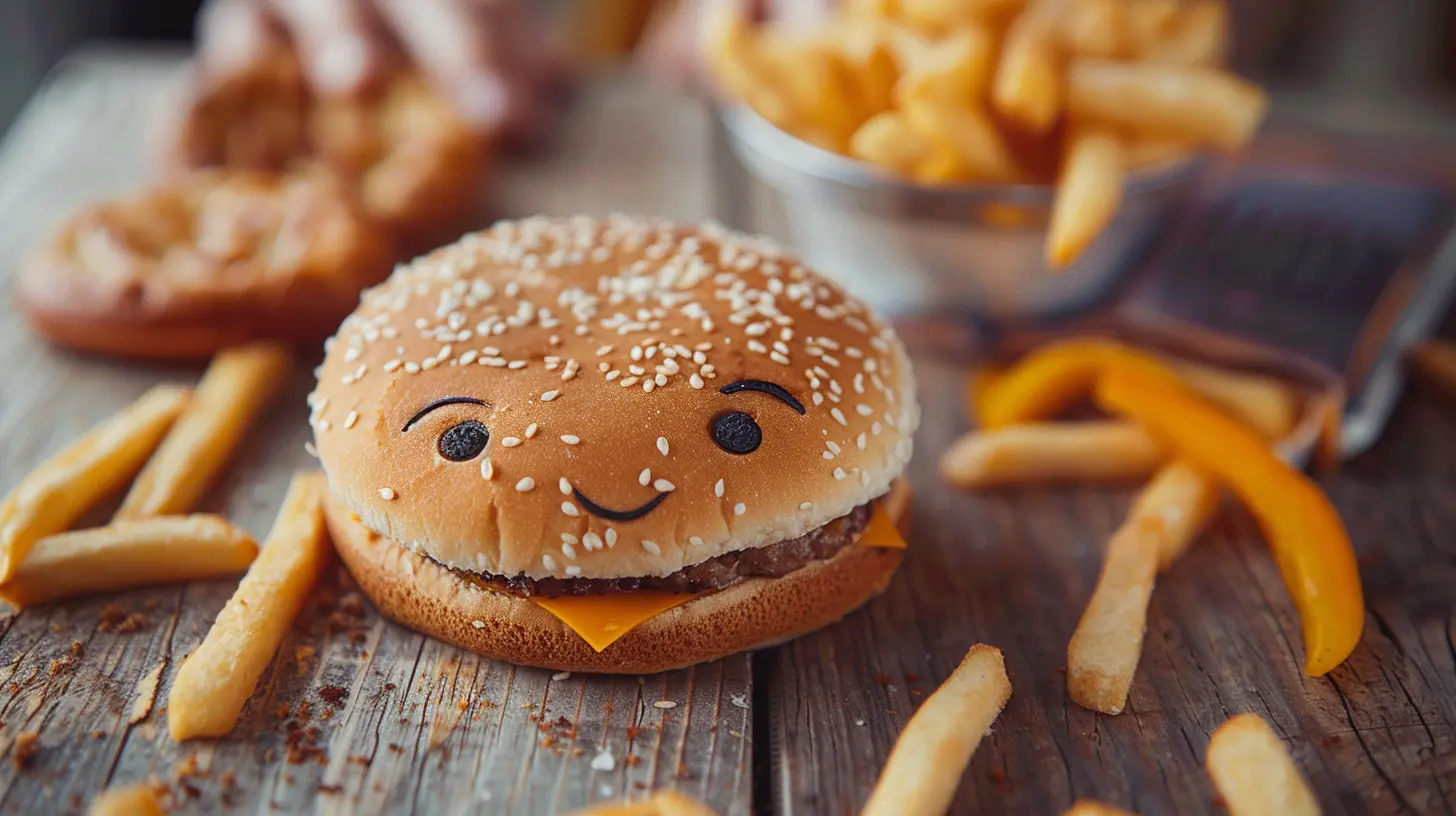Emotional Eating: Understanding the Psychology Behind It
7 July 2025
Let’s talk about something a little personal, a little vulnerable, and incredibly common—emotional eating. You know what I’m talking about. It’s that tub of ice cream after a stressful day. That bag of chips when you're feeling lonely. Or maybe the pile of cookies you inhaled during a binge session of your favorite show because, well, life felt too overwhelming.
But here’s the thing: emotional eating isn’t just about the food. It’s about what’s going on underneath. The emotions. The triggers. The stories we tell ourselves. If you’ve ever felt stuck in this cycle of eating your emotions, you’re not alone—and what’s even better, you can absolutely work through it.
Let’s dive in and unpack the psychology behind emotional eating. Together, we’ll figure out where it comes from, why it sticks around, and how to deal with it in a healthier, more mindful way.
What Exactly Is Emotional Eating?
Before we get into the "why," let’s start with the "what."Emotional eating is when you use food—usually comfort food—to soothe or suppress negative emotions. These emotions can range from stress and sadness to boredom or even happiness. Yeah, emotional eating isn’t always about feeling bad. Sometimes we eat to celebrate, reward ourselves, or because it’s just part of the tradition (hello, holiday feasts!).
But the key difference here is that emotional eating is driven by feelings, not physical hunger.
Emotional Hunger vs. Physical Hunger
Let’s break it down. These two types of hunger are not the same—and understanding the difference is huge when you're trying to get a grip on emotional eating.Physical Hunger:
- Comes on gradually- Happens a few hours after eating
- Is satisfied with any food
- Stops when you're full
- Doesn’t cause guilt or shame
Emotional Hunger:
- Hits suddenly and feels urgent- Comes on during stress or strong emotions
- Craves specific “comfort” foods
- Often results in overeating
- Leaves you feeling guilty, ashamed, or even emptier
Sound familiar? If so, you're far from alone.
Why Do We Eat Emotionally?
Here’s where psychology plays its role. Emotional eating isn’t about weakness or lack of willpower. It’s a learned coping mechanism that your brain has developed to protect you. Sounds odd, but your mind is just trying to help—kind of like using a band-aid for a broken arm. The intention is good, but it’s not really addressing the root of the problem.1. Stress and Cortisol
When you're stressed, your body releases cortisol—the “stress hormone.” Guess what cortisol does? It increases your appetite and cravings for high-fat, high-sugar foods. It doesn’t care if it’s 11 PM and you already brushed your teeth. If you’re stressed, your body is on high alert and thinks you need fuel to get through it.2. Childhood Patterns
Think back to when you were a kid. Were you rewarded with treats? “You did great on your test—let’s get some ice cream!” Or maybe food was there every time you were sad. These patterns can get hardwired into your brain, and even as an adult, you might find yourself repeating them without even realizing it.3. Emotional Avoidance
Food can be a distraction. When you’re dealing with uncomfortable feelings like loneliness, anxiety, or sadness, eating becomes a way to numb out. Instead of sitting with those feelings, we try to push them down with a cookie. Or six. Because feeling nothing feels easier than feeling pain.
The Emotional Eating Cycle
So, how does emotional eating become a pattern? It usually follows a pretty predictable cycle:1. You experience an emotional trigger (stress, sadness, anger, boredom).
2. You crave comfort food.
3. You eat, often automatically or mindlessly.
4. You feel temporary relief or distraction.
5. Guilt or shame sets in.
6. The emotional trigger worsens… and the cycle starts again.
Sound familiar? That’s because this loop is incredibly common. But the good news? Once you recognize the cycle, you can start breaking it.
How to Know If You’re an Emotional Eater
Here are a few questions to ask yourself:- Do you eat more when you’re feeling stressed or overwhelmed?
- Do you eat when you’re not physically hungry?
- Do you turn to food when you’re bored, sad, or lonely?
- Do you feel out of control around certain foods?
- Do you feel guilty after eating?
If you nodded “yes” to most of these, emotional eating might be something worth exploring deeper. But don’t worry—we’re in this together.
Tips to Overcome Emotional Eating
No quick fixes here—just real, thoughtful tips that work when you work them.1. Get to the Root Emotion
Ask yourself: “What am I really feeling right now?” Sad? Empty? Anxious? Naming the emotion can be the first step in separating your feelings from your hunger. Sometimes something as simple as pausing and identifying what’s really going on can shift your entire mindset.2. Keep a Food and Mood Journal
Start noting not just what you eat, but how you’re feeling before and after. Over time, patterns will emerge, and you’ll start seeing which emotions are your triggers. Awareness is power.3. Find New Coping Mechanisms
When emotion strikes, try something different. Journal. Take a walk. Call a friend. Meditate. Practice deep breathing. It won’t feel natural at first, because you’re breaking a habit, but with time, it gets easier.4. Don’t Deprive Yourself
Strict diets can backfire. When your body feels deprived, it only intensifies cravings—not to mention increases emotional sensitivity. Make peace with food. Allow yourself to occasionally enjoy your favorites without guilt.5. Practice Mindful Eating
This isn’t just a buzzword—it really helps. When you eat, slow down. Tune into your body. Ask yourself if you’re really hungry. Look at your food. Taste it. Enjoy it. Mindful eating can turn an automatic habit into a conscious decision.When to Seek Support
Sometimes emotional eating is tied to deeper issues—trauma, depression, anxiety, unprocessed grief. And hey, there’s no shame in needing help. Therapy (especially with a licensed therapist familiar with eating behaviors) can be life-changing. Support groups, coaching, even talking with trusted friends and family—these can all provide the support you need.Remember: doing it alone is tough. But you don’t have to.
The Upside of It All
This article isn’t about making you feel bad or ashamed for emotional eating. Quite the opposite. We’re here to understand it—so you can work with it, not against it.Here’s the truth: emotional eating is a signal, not a flaw. It’s your brain saying, “Hey, something’s up. Pay attention.” And once you do, you open the door to growth, healing, and a whole new relationship with food—and yourself.
Be Kind to Yourself
Progress doesn’t mean perfection. You might still reach for chocolate on a rough day. That doesn’t mean you’re failing. It means you’re human.Change comes from consistency, compassion, and curiosity. Keep asking the tough questions. Keep showing up for yourself. You’re worth the effort.
And more than that—you’re not alone.
Final Thoughts
Food is meant to nourish you, but it’s also tied to memories, feelings, celebrations, and comfort. Emotional eating is a part of the human experience—but it doesn’t have to control you.The journey to understanding your emotions, loving your body, and creating a healthy relationship with food is just that—a journey. And the first step? It’s already behind you. You’re here. You’re reading this. You’re ready to grow.
So take a deep breath. Show yourself some grace. And remember, you’ve got this.
all images in this post were generated using AI tools
Category:
Emotional Well BeingAuthor:

Eliana Burton
Discussion
rate this article
1 comments
Garrett McIntyre
This article offers valuable insights into the complex relationship between emotions and eating habits. Understanding the psychological triggers behind emotional eating is crucial for developing healthier coping strategies. It’s a reminder that addressing emotional issues is just as important as nutrition in promoting overall well-being. Great read!
July 19, 2025 at 4:49 AM

Eliana Burton
Thank you for your thoughtful feedback! I'm glad you found the insights on emotional eating helpful in promoting overall well-being.


